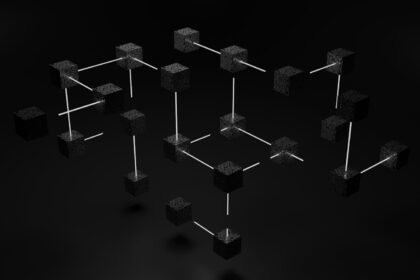The mechanism behind bitcoin’s transaction confirmation relies on a computational challenge that requires miners to expend significant effort. This process involves solving complex puzzles, which ensures that each new block added to the blockchain is legitimate and agreed upon by the network participants. By demanding this level of exertion, the system maintains integrity and prevents fraudulent activity.
This algorithm facilitates agreement among distributed nodes by requiring validation through resource-intensive calculations. Miners compete to find a solution that meets specific criteria, proving they have invested sufficient computational power. Such a method strengthens security by making it prohibitively expensive for malicious actors to manipulate transaction history.
Mining not only secures the ledger but also regulates the issuance of new bitcoins, linking economic incentives directly with network stability. The ongoing competition for validation rights ensures continuous verification of transactions, creating a robust environment where trust is established without relying on centralized authorities.
Proof of Work: Energy-Based Consensus
The mechanism that secures Bitcoin and many other cryptocurrencies relies on a computational challenge requiring substantial energy input. This approach uses a specific process where miners repeatedly perform calculations, seeking to find a solution that meets certain criteria set by the network protocol. Such an algorithm incentivizes participants to invest real-world resources, primarily electricity and computing power, to validate transactions and add new blocks to the chain.
This method ensures network integrity by making it prohibitively expensive for malicious actors to alter transaction history. Since miners expend significant effort, any attempt to rewrite past records would require redoing all previous computations faster than honest participants combined–a feat practically impossible given current global mining power.
How Mining Secures Blockchain Integrity
Mining involves solving cryptographic puzzles where miners compete to discover a number (nonce) that produces a hash below a target threshold. This threshold dynamically adjusts every 2016 blocks in Bitcoin’s protocol, maintaining block creation at roughly one every ten minutes despite fluctuating total computational power. The competition aspect guarantees that only one miner can successfully append the next block, which is then propagated through the network for validation.
This procedure not only confirms legitimate transactions but also deters attacks such as double-spending or rewriting transaction history. Because each new block references its predecessor via cryptographic hashes, altering any information retroactively demands recomputing all subsequent blocks’ solutions–an endeavor demanding exponentially increasing energy and time.
Energy Consumption and Its Implications
The extensive electrical consumption of this verification system has sparked debates about sustainability. For instance, estimates place Bitcoin’s annual electricity usage comparable to that of medium-sized countries. However, this energy expenditure underpins robust security guarantees unmatched by alternative consensus mechanisms relying on less resource-intensive methods.
- Bitcoin mining farms often utilize specialized hardware (ASICs) designed for maximum efficiency in executing hashing algorithms.
- Geographical distribution of mining operations frequently aligns with regions offering low-cost renewable or surplus energy sources.
- Innovations in cooling technologies and hardware optimization continue reducing per-hash energy consumption over time.
Algorithmic Principles Behind Validation Effort
The core algorithm requires miners to perform repeated SHA-256 hashing until finding acceptable outputs meeting difficulty targets set by the protocol rules. This iterative process embodies the principle that producing valid proofs demands tangible computational labor rather than arbitrary claims. It effectively transforms mathematical complexity into economic cost, aligning incentives among network participants toward honest behavior.
By committing resources upfront without immediate guarantees of reward, miners contribute to a decentralized trust model where no single entity controls ledger updates. The random nature of successful discoveries distributes new coins as compensation for expended effort while preserving fairness across diverse participants worldwide.
Case Studies Demonstrating Security Resilience
An illustrative example includes historical attempts at 51% attacks on smaller cryptocurrencies using similar validation models but with reduced global mining power. These networks experienced brief reorganizations when attackers temporarily gained majority influence; however, Bitcoin’s larger scale and higher cumulative computation have thus far prevented such breaches against its ledger integrity.
The Future Outlook: Balancing Efficiency and Robustness
Evolving discussions about integrating alternative validation approaches focus on reducing environmental footprint while maintaining security standards established by this methodology. Hybrid solutions combining proof-based mechanisms with stake-weighted selection or sharding aim to optimize performance without compromising resistance against manipulation attempts.
Meanwhile, understanding how these algorithms function helps clarify why significant physical resources remain integral in sustaining distributed ledgers’ trustworthiness today–and how ongoing technical improvements continue shaping their effectiveness within growing ecosystems like Bitcoin’s network.
How Mining Validates Transactions
Mining plays a fundamental role in maintaining the security and integrity of bitcoin’s network by confirming transactions through a complex computational process. Each transaction is bundled into a block, which miners then compete to validate by solving a challenging cryptographic puzzle. This mechanism ensures that only legitimate transactions are added to the blockchain, preventing double-spending and fraud.
The process relies on an energy-intensive algorithm where miners expend significant computational power to find a specific numeric solution. Successfully discovering this solution allows the miner to append the new block to the chain, simultaneously verifying all included transactions. This method strengthens trust across the decentralized system without requiring a centralized authority.
Mechanics of Transaction Validation in Mining
The validation process begins with nodes broadcasting unconfirmed transactions across the network. Miners collect these pending transactions into candidate blocks and initiate calculations aiming to meet predefined criteria set by the algorithm. This calculation involves repeatedly hashing block data combined with a nonce–a varying number–until achieving an output below a certain threshold.
Once this target is met, it serves as proof that computational effort has been invested, allowing other participants to accept the block as valid. The miner who completes this task first broadcasts their solution, and upon verification by others, consensus is reached regarding transaction legitimacy. Such agreement prevents unauthorized alterations or inclusion of invalid data within blocks.
This methodology capitalizes on economic incentives: miners receive newly minted bitcoins plus transaction fees for successful validation, motivating continuous participation despite substantial energy consumption. Real-world analysis highlights how fluctuations in mining difficulty adapt dynamically to maintain average block time around ten minutes, thereby stabilizing validation speed despite growing network power.
- Transaction grouping: Miners assemble multiple transactions into one block.
- Hash computations: Repeated attempts calculate hashes matching strict requirements.
- Nonce variation: Changing nonce values alters hash outputs until conditions satisfy.
- Block broadcast: The solved block is shared for network-wide confirmation.
A practical example can be observed during periods of high transaction volume when mining pools prioritize larger fee-paying transactions for faster confirmation. This prioritization illustrates how mining algorithms influence transaction ordering and finality while balancing network throughput and participant rewards.
The rigorous validation embedded within mining operations protects bitcoin’s ledger against manipulation attempts and ensures transactional accuracy over time. Understanding this process builds confidence in how decentralized financial systems maintain resilience through transparent yet computationally demanding protocols accessible worldwide.
Energy Consumption Impact Analysis
The computational effort required for transaction validation in networks like Bitcoin directly influences their overall energy usage. Mining nodes perform intensive calculations to solve cryptographic puzzles, which secures the network by making it prohibitively expensive to alter transaction history. This process demands specialized hardware running continuously, leading to substantial electricity consumption measured in terawatt-hours (TWh) annually. For instance, Bitcoin mining alone has been estimated to consume over 100 TWh per year, comparable to the energy use of some small countries.
Such high power requirements raise questions about sustainability and environmental impact. The algorithm governing this mechanism incentivizes miners to expend increasing amounts of computational work to compete for block rewards, thereby escalating total energy demand. However, it is important to note that these resources contribute directly to maintaining transaction integrity and preventing double-spending attacks, reinforcing the security model of decentralized digital currencies.
Technical Dynamics and Practical Examples
The validation procedure relies on a probabilistic challenge where miners repeatedly compute hashes until a solution meets predefined criteria. This iterative process is inherently energy-intensive due to its trial-and-error nature. For example, during peak difficulty periods in the Bitcoin network, thousands of ASIC devices operate simultaneously worldwide, consuming large quantities of electricity primarily sourced from fossil fuels in certain regions.
Alternative cryptocurrencies have experimented with less power-demanding mechanisms or hybrid models combining computation with stake-based authorization to reduce environmental footprints while preserving trustworthiness. Moreover, some mining operations have shifted toward renewable energy sources such as hydroelectric or solar power, mitigating carbon emissions without compromising network resilience.
Hardware Requirements for Mining
Mining cryptocurrency requires specialized hardware tailored to efficiently solve cryptographic puzzles dictated by the validation algorithm. For Bitcoin, this means employing Application-Specific Integrated Circuits (ASICs) designed to perform hashing functions at extremely high speeds with optimal power consumption. Standard consumer-grade CPUs or GPUs lack the required computational throughput and energy efficiency, making them unprofitable for sustained mining activities.
The core of mining is executing calculations that confirm transaction blocks according to a complex mathematical challenge. The hardware must deliver consistent hash rates while managing thermal output and electrical consumption effectively. Devices like ASIC miners exhibit hash rates measured in terahashes per second (TH/s), with models such as the Bitmain Antminer S19 Pro achieving around 110 TH/s at approximately 3250 watts, illustrating the balance between performance and power draw necessary for economic operation.
Key Hardware Components and Their Roles
Mining rigs primarily consist of processing units optimized for the cryptographic algorithm employed by the network. In Bitcoin’s case, SHA-256 hashes define the workload. High-performance ASICs outperform GPUs substantially because they are purpose-built for this specific task, offering better speed-to-energy ratios. Meanwhile, cooling systems like fans or liquid coolers are critical to maintain operational stability under heavy loads.
- Hash Rate: Indicates how many calculations the device can perform per second; higher values improve chances of block validation.
- Power Consumption: Influences profitability; efficient miners maximize hashes per watt.
- Durability: Continuous operation demands reliable hardware resistant to overheating and wear.
A practical example includes comparing GPU-based mining rigs versus ASIC machines: GPUs offer flexibility across different cryptocurrencies but have significantly lower hash rates and higher energy use compared to ASICs optimized specifically for Bitcoin’s proof mechanism. This factor directly affects return on investment over time due to electricity costs and hardware depreciation.
Energy Efficiency Considerations
The validation process involves substantial energy expenditure, requiring miners to prioritize devices with superior performance-per-watt ratios. Modern ASICs achieve efficiencies around 30 joules per terahash (J/TH), whereas older models might consume double or triple that amount, reducing net profitability especially in regions with high electricity prices. Implementing renewable energy sources or locating operations near inexpensive power grids can further optimize mining economics.
The choice of hardware should also consider long-term scalability; devices capable of firmware updates can adapt slightly to evolving algorithms or optimization techniques without immediate replacement. Furthermore, modular setups allow incremental expansion aligned with market conditions rather than large upfront investments that may become obsolete quickly as algorithm difficulty increases.
Security Mechanisms in Proof of Work
To maintain the integrity of decentralized networks, the validation process depends heavily on a calculation-intensive method that requires participants to solve complex mathematical puzzles. This approach ensures that only those who expend significant computational effort can propose new entries, effectively protecting the system against fraudulent manipulations. The core security lies in this resource-demanding operation, which deters attackers by making dishonest attempts prohibitively expensive.
The algorithm governing this procedure adjusts its difficulty dynamically, responding to the total computational power of all participants. Such adaptability guarantees a relatively stable rate of new entries and prevents rapid, unchecked creation that could destabilize trust. This mechanism also balances incentives for miners who validate transactions by rewarding them proportionally to their contribution, ensuring honest participation remains economically viable.
Technical Foundations and Practical Implications
The validation technique employs cryptographic hashing functions that transform input data into fixed-length strings unpredictably. Miners compete by finding a nonce value that produces a hash below a predefined threshold, demonstrating their commitment through repeated trial-and-error computations. This requirement enforces an objective proof tied directly to expended resources, linking security to measurable effort rather than mere trust.
One practical example involves analyzing attacks like the 51% scenario, where an entity controlling the majority of computational capacity could potentially override network rules. However, acquiring such dominance entails immense hardware investment and energy consumption, creating natural economic barriers against hostile takeovers. Real-world cases show that networks with diversified mining pools remain resilient due to distributed control and continuous validation efforts.
In addition, the probabilistic nature of block discovery introduces uncertainty favoring honest nodes over adversaries. Since miners race independently yet validate collectively, inconsistency quickly resolves as longer chains gain acceptance based on accumulated work evidence. This consensus formation leverages both competition and collaboration among participants to uphold transaction finality and prevent double-spending.
Conclusion: Exploring Alternatives to Energy-Intensive Validation Mechanisms
The shift away from computationally heavy algorithms, like those underpinning Bitcoin’s mining process, is a necessary step toward sustainable blockchain security. Validation methods that rely less on continuous hashing and more on stakeholder participation or cryptographic proofs demonstrate promising efficiency gains without compromising network integrity.
Protocols such as Proof of Stake and Delegated Proof of Stake replace the brute-force calculations with resource-bound selection processes, significantly reducing the environmental footprint while maintaining robust protection against attacks. These alternatives enable faster transaction finality and lower entry barriers for participants, reshaping the validation landscape.
Technical Insights and Future Directions
- Security Trade-offs: While energy-intensive mining offers proven resistance to Sybil attacks through costly computation, newer algorithms utilize economic incentives and game theory to achieve similar safeguards with less resource consumption.
- Consensus Efficiency: Algorithms like Practical Byzantine Fault Tolerance (PBFT) provide near-instant agreement in permissioned networks by minimizing redundant computations typical in traditional mining setups.
- Hybrid Models: Emerging solutions combine elements of computational effort with stake-based validation to balance decentralization with scalability–for example, Ethereum’s move toward a hybrid consensus framework illustrates this trend.
The broader impact extends beyond energy savings; these innovations could democratize network participation by lowering hardware requirements traditionally associated with mining rigs. This accessibility may foster greater decentralization and resilience against concentrated control.
Looking ahead, continuous research into cryptographic primitives such as zero-knowledge proofs offers pathways to enhance transaction privacy while streamlining validation steps. Integrating such techniques within consensus protocols promises not only greener but also more secure distributed ledgers tailored for diverse applications across industries.





